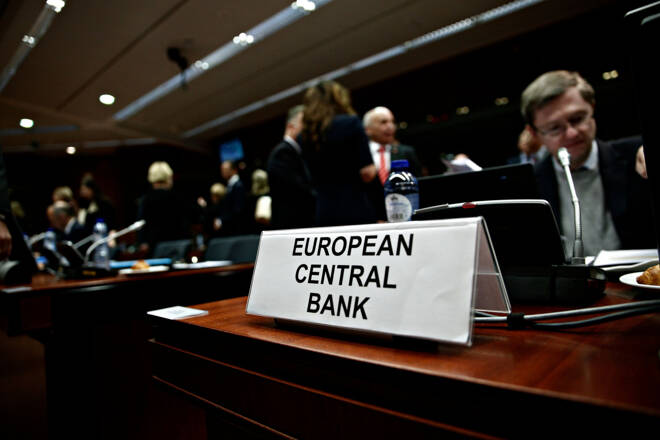Advertisement
Advertisement
ECB’s Lagarde Outlines Strategy to Bring Down Inflation.
By:
ECB President Christine Lagarde outlines strategy for bringing inflation to target in timely manner.
Key Takeaways
- ECB’s strategy to achieve inflation target: data-dependent rate path, liquidity support, and continuous assessment of key inputs.
- Three key inputs monitored for future rate path: inflation outlook, underlying inflation dynamics, and monetary policy transmission.
- ECB pays close attention to credit availability and pricing for orderly tightening.
- Inflation shock due to pandemic-induced supply chain disruptions and Russia’s invasion of Ukraine.
- Lagarde emphasizes the importance of a data-dependent approach and no trade-offs around the primary objective of price stability.
Overview
European Central Bank (ECB) President Christine Lagarde outlined the bank’s three-element strategy to achieve its goal of bringing inflation down to the medium-term target in a timely manner.
ECB Will Monitor Data-Dependent Rate Path, Ready to Provide Liquidity Support, and Continuously Assess Key Inputs
Firstly, the rate path will remain data-dependent with no commitment to either raise or finish hiking rates.
Secondly, the ECB is ready to provide liquidity support if necessary to preserve the smooth transmission of monetary policy.
Finally, the future calibration of the rate path will be determined by continuous monitoring of three key inputs: the inflation outlook, underlying inflation dynamics, and the strength of monetary policy transmission.
Lagarde noted that the euro area had been affected by an inflation shock due to the pandemic-induced supply chain disruptions and Russia’s invasion of Ukraine.
While falling energy prices and easing supply bottlenecks are likely to decrease inflation this year, underlying inflation dynamics remain strong.
Therefore, the ECB needed to have a robust strategy to achieve its goal. Lagarde highlighted the importance of a data-dependent approach, a clear reaction function, and no trade-offs around the primary objective of price stability.
She also assured that there was no trade-off between price stability and financial stability, and the ECB had tools to provide liquidity support if needed.
ECB Monitors Inflation, Policy Transmission & Underlying Dynamics for Future Rate Path
To determine the future rate path, the ECB will continuously monitor three key inputs: the inflation outlook, underlying inflation dynamics, and the strength of monetary policy transmission.
The assessment of the inflation outlook will be based on incoming economic and financial data, staff inflation projections, and real-time indicators.
The ECB will also draw on the dynamics of underlying inflation as a complementary cross-check of its forecasting process. Wage growth will be a key factor in determining which force will win out in terms of increasing domestic price pressures and weakening a key driver of underlying inflation pressures.
ECB Monitors Credit Availability and Pricing, Aims for Orderly Tightening.
The ECB is paying close attention to indicators of credit availability and pricing to monitor whether there is a further strengthening of the pass-through.
The bank will make sure that the process will be orderly throughout as more restrictive credit conditions are part of the mechanism by which their tightening ultimately reins in excess price pressures and brings inflation back to target.
In her concluding remarks, Lagarde emphasized the need to be focused on the goal and robust in the strategy to achieve it in a rapidly changing world.
For a look at all of today’s economic events, check out our economic calendar.
About the Author
James Hyerczykauthor
James Hyerczyk is a U.S. based seasoned technical analyst and educator with over 40 years of experience in market analysis and trading, specializing in chart patterns and price movement. He is the author of two books on technical analysis and has a background in both futures and stock markets.
Advertisement
